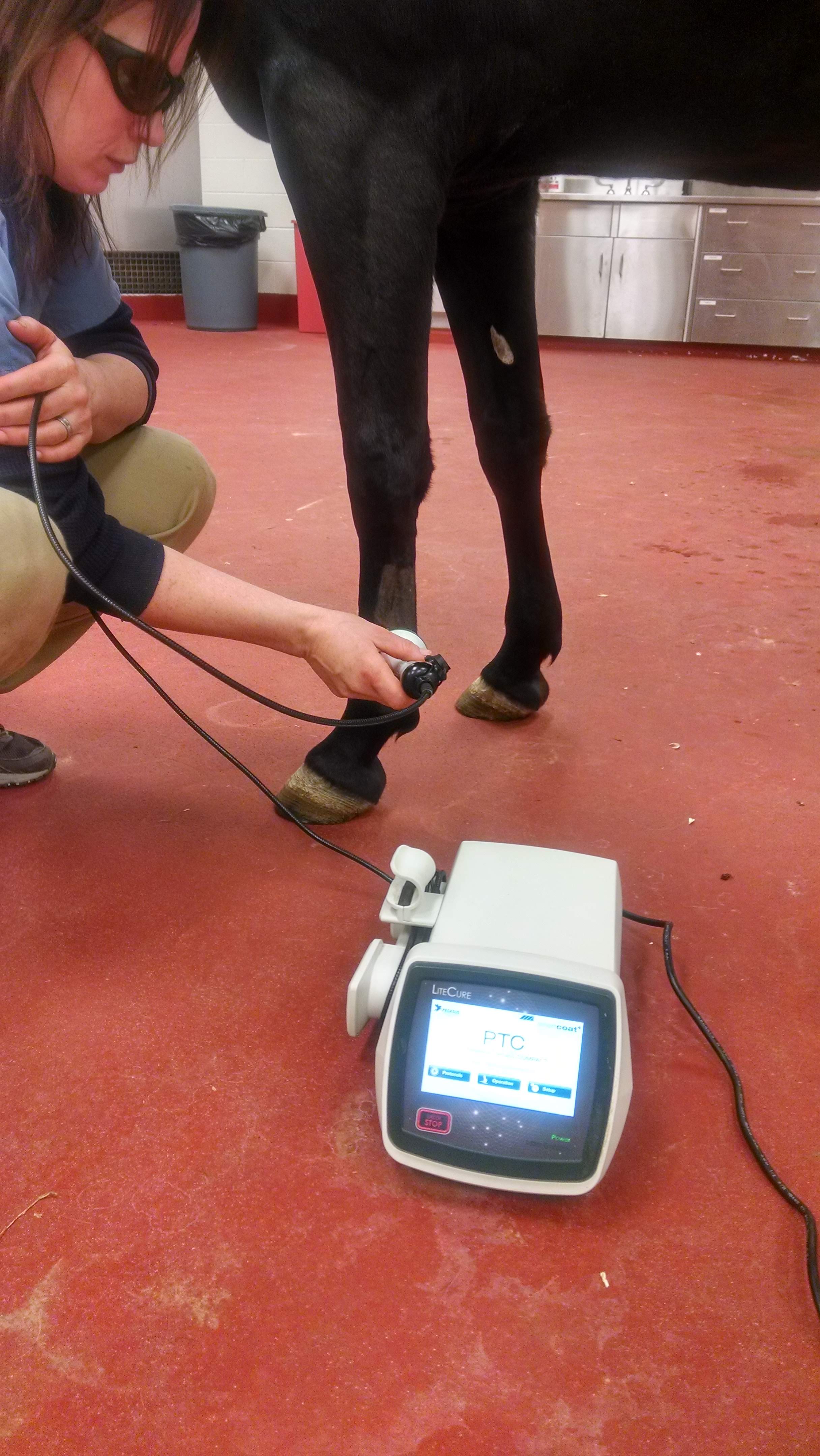Equine Therapy for Children: Psychological and Behavior Support Clarified
Equine Therapy for Children: Psychological and Behavior Support Clarified
Blog Article
Examining the Effectiveness of Laser Treatment in Equine Therapy for Injury Recovery
The analysis of laser therapy's performance in equine injury rehab pivots on multiple factors, including healing time, discomfort mitigation, and tissue regrowth. Vets often observe superior results with laser treatment contrasted to traditional methods, placing it as a crucial aspect in equine treatment. Equine Therapy.

Comprehending Laser Therapy
Laser therapy has become a critical tool in veterinary medicine, specifically in the therapy of equine problems. Understood for its non-invasive nature and efficiency, laser treatment entails the application of specific wavelengths of light to stimulate cells repair and decrease inflammation. This restorative technique is significantly preferred for its capacity to increase the recovery procedure in steeds struggling with a variety of musculoskeletal injuries and persistent problems.
The primary system behind laser therapy is its capacity to improve cellular features. When laser light permeates the skin, it is taken in by mitochondria, the powerhouse of cells, which brings about increased production of adenosine triphosphate (ATP) This biochemical power increase promotes mobile repair service and regrowth. In addition, laser treatment promotes vasodilation, boosting blood circulation and oxygen shipment to broken cells, thus expediting recovery.
In equine medicine, laser therapy is specifically beneficial for conditions such as tendonitis, osteoarthritis, and injury healing. The strategy is lauded for its pain-relieving residential or commercial properties, enabling horses to reclaim wheelchair and feature much more quickly. Vets additionally appreciate its marginal side impacts compared to other treatment modalities, making it a trusted and safe choice for equine care.
Exactly How Laser Treatment Functions
To understand exactly how laser therapy functions, it is important to delve right into the interaction in between light energy and organic tissues. Laser treatment, also recognized as Low-Level Laser Treatment (LLLT) or photobiomodulation, uses details wavelengths of light to permeate cells and stimulate mobile processes. The device pivots on the absorption of photons by cell chromophores, mainly within the mitochondria, which are crucial for power manufacturing.
Upon absorption, these photons activate a collection of biochemical adjustments, improving mitochondrial feature and leading to enhanced adenosine triphosphate (ATP) manufacturing. This rise in ATP accelerates mobile metabolism, advertising tissue repair service and regrowth. In addition, laser therapy modulates inflammatory feedbacks by affecting cytokine levels and minimizing oxidative stress and anxiety, therefore easing discomfort and swelling.
One more significant facet of laser treatment is its function in enhancing microcirculation. The therapy advertises vasodilation, enhancing blood flow and oxygen delivery to damaged tissues. This helps with the elimination of cellular particles and supports additional hints the expansion of fibroblasts and collagen synthesis, vital for wound recovery.
Clinical Proof
The efficacy of laser therapy in equine treatment has been validated through various clinical researches, showcasing its healing prospective across a range of problems. A research study carried out by Turner et al. (2012) demonstrated that equines treated with low-level laser therapy (LLLT) for ligament injuries exhibited accelerated recovery compared to those obtaining traditional therapies.
In a similar way, research by Johnson and coworkers (2015) focused on equine muscular tissue injuries, exposing that laser treatment significantly quickened muscle fiber regeneration and reduced muscle mass rigidity. Scientific evaluations have actually revealed that laser treatment can minimize persistent conditions such as osteoarthritis.
Vet Insights
Vet professionals have significantly identified the worth of laser therapy in equine treatment, pointing out both empirical proof and direct experience. Dr. Jane Smith, a leading equine veterinarian, keeps in mind that laser therapy has actually revealed remarkable efficiency in lowering swelling and speeding up tissue repair work.
Vets additionally appreciate the convenience of laser treatment. She points out that laser treatment can be tailored to the certain requirements of each steed, ensuring optimal outcomes.

Practical Considerations
A vital element of executing laser treatment in equine therapy includes comprehending the useful considerations that ensure its effectiveness and safety. Primarily, it is crucial to pick the proper laser tool, as numerous types differ in wavelength, power, and infiltration deepness. Veterinarians should be well-versed in these parameters to tailor therapy protocols efficiently to every injury type
In addition, the frequency and duration of laser therapy sessions need mindful preparation to make the most of healing benefits while lessening any potential negative effects. Consistent tracking of the equine's action to therapy can lead necessary adjustments in the therapy program. Establishing a secure and controlled atmosphere during therapies is additionally important to avoid unexpected direct exposure to laser discharges, which can hurt both the horse and the trainer.
Educating and certification of employees carrying out laser treatment are extremely important to make certain proper strategy and to promote security standards. Furthermore, keeping precise records of each session, consisting of laser setups and observed results, is crucial for examining the total performance of the treatment and for making data-driven decisions.
Conclusion
Laser therapy has actually emerged as an effective method in equine injury rehabilitation, supplying significant benefits in recuperation time, discomfort relief, and cells healing. Professional studies emphasize significant enhancements in problems such as tendonitis and osteoarthritis, credited to improved cellular function and boosted ATP manufacturing. Veterinarian observations substantiate these searchings for, highlighting superior outcomes contrasted to conventional therapies. For optimal outcomes, continual tracking and individualized therapy methods remain important in their website leveraging the full potential of laser treatment in equine care.
Report this page